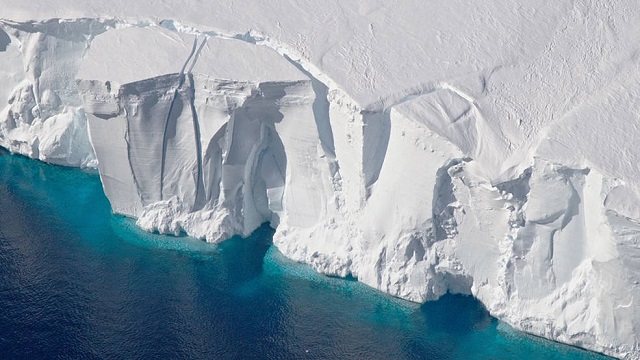New research on Antarctica conducted by the scientists at NASA, including the first map of iceberg calving, doubles the previous estimates of loss from ice shelves and details how the continent is changing. This is more bad news for planet Earth.
As Antarctic ice melts it fills the oceans with more water adding to the rise in global sea levels.
NASA explains that most Antarctic glaciers flow to the ocean, where they end in floating ice shelves up to 2 miles (3 kilometers) thick and 500 miles (800 kilometers) across. Ice shelves act like buttresses to glaciers, keeping the ice from simply sliding into the ocean. When ice shelves are stable, they have a natural cycle of calving and replenishment that keeps their size fairly constant over the long term.
Will you offer us a hand? Every gift, regardless of size, fuels our future.
Your critical contribution enables us to maintain our independence from shareholders or wealthy owners, allowing us to keep up reporting without bias. It means we can continue to make Jewish Business News available to everyone.
You can support us for as little as $1 via PayPal at office@jewishbusinessnews.com.
Thank you.
But in recent decades, the warming ocean has been destabilizing Antarctica’s ice shelves by melting them from below, making them thinner and weaker. Satellite altimeters measure the thinning process by recording the changing height of the ice, but until this study, there hasn’t been a comprehensive assessment of how climate change might be affecting calving around the continent.
One study, published in the journal Nature, maps how iceberg calving – the breaking off of ice from a glacier front – has changed the Antarctic coastline over the last 25 years. The researchers found that the edge of the ice sheet has been shedding icebergs faster than the ice can be replaced. This surprising finding doubles previous estimates of ice loss from the Antarctic’s floating ice shelves since 1997, from 6 trillion to 12 trillion metric tons. Ice loss from calving has weakened the ice shelves and allowed Antarctic glaciers to flow more rapidly to the ocean, accelerating the rate of global sea level rise.
“Antarctica is crumbling at its edges,” says JPL scientist Chad Greene, lead author of the calving study. “And when ice shelves dwindle and weaken, the continent’s massive glaciers tend to speed up and increase the rate of global sea level rise.”




